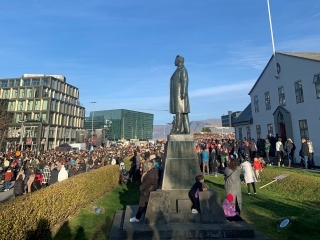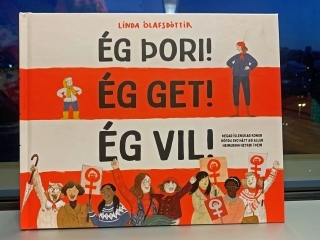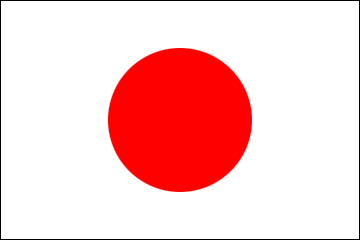From Ambassador (The Women's Strike in Iceland)
2023/12/8


October 24 is “United Nations Day”, in honour of this date in 1945, when the Charter of the United Nations (UN) entered into force and the United Nations was officially established. The Soviet Union ratified the Charter on this date, which resulted in the ratification of the 20 countries required for the UN to enter into force. Incidentally, it was not until 1956 that Japan, a defeated nation, was granted membership of the UN.
Here in Iceland, however, the day has another special meaning, as the first so-called “women's strike (kvennaverkfall)” took place on this day in 1975.
This strike is sometimes referred to as “women's holiday (kvennafrí)”. In 1975, this term was used more commonly.
What is remarkable about this strike is the participation rate! A surprising 90% of all women in Iceland took part in the event.
In the 1975 International Women's Year*, various commemorative events were held around the world. But it is almost unprecedented that so many women have collectively abandoned work and domestic labour.
At that time, the song called “Áfram stelpur (Onward Girls)” was widely sung. In its lyrics, there is a verse that reads “Ég þori! Ég get! Ég vil! (I Dare! I Can! I Will!)”, which is still spoken of today as slogan of women’s strike.
Recently, a book for children bearing the same title was published and drew a wide attention as well.
“Ég þori!” is a difficult word to translate, but it means to be courageous, take risks and venture to do things in the face of hesitation. In English, it is translated as “I dare”. I think the wording gives a sense of the tense atmosphere that prevailed at the time.
Today, Iceland is often talked about as the country with the most advanced gender equality in the world, but if you go back in history, in the mid-1970s, the status of women was not high.
Today, half of all ministers and almost half of all parliamentarians are women, but at the time there was no female cabinet minister and only three out of a total of 60 parliamentarians were women. Although the number of working women and the employment rate of women had been increasing year by year, there was a deep-rooted perception that women only earned wages as subsidiary income. And as a result, there was a large wage gap between women and men. In addition, the economic value of women's traditional work, such as childcare, housework and looking after livestock on the farm, was not considered significant and was not given enough attention.
Organising such a nationwide strike and mobilising participants must have been difficult, even in those days, no matter how small a country is. The women must have faced unwelcoming tone at work or at home for such a strike.
On October 24 this year, the women's strike was re-enacted for the first time in many years and a large rally was held.
*) The UN designated 1975 as International Women’s Year, organizing the first world conference in Mexico City between June 19 and July 2, aiming to improve the status of women. The UN further designated the decade from 1975-1985 as the United Nations Decade for Women. Furthermore, in 1975, during the International Women's Year, the UN began celebrating March 8 as International Women's Day.
Here in Iceland, however, the day has another special meaning, as the first so-called “women's strike (kvennaverkfall)” took place on this day in 1975.
This strike is sometimes referred to as “women's holiday (kvennafrí)”. In 1975, this term was used more commonly.
What is remarkable about this strike is the participation rate! A surprising 90% of all women in Iceland took part in the event.
In the 1975 International Women's Year*, various commemorative events were held around the world. But it is almost unprecedented that so many women have collectively abandoned work and domestic labour.
At that time, the song called “Áfram stelpur (Onward Girls)” was widely sung. In its lyrics, there is a verse that reads “Ég þori! Ég get! Ég vil! (I Dare! I Can! I Will!)”, which is still spoken of today as slogan of women’s strike.
Recently, a book for children bearing the same title was published and drew a wide attention as well.
“Ég þori!” is a difficult word to translate, but it means to be courageous, take risks and venture to do things in the face of hesitation. In English, it is translated as “I dare”. I think the wording gives a sense of the tense atmosphere that prevailed at the time.
Today, Iceland is often talked about as the country with the most advanced gender equality in the world, but if you go back in history, in the mid-1970s, the status of women was not high.
Today, half of all ministers and almost half of all parliamentarians are women, but at the time there was no female cabinet minister and only three out of a total of 60 parliamentarians were women. Although the number of working women and the employment rate of women had been increasing year by year, there was a deep-rooted perception that women only earned wages as subsidiary income. And as a result, there was a large wage gap between women and men. In addition, the economic value of women's traditional work, such as childcare, housework and looking after livestock on the farm, was not considered significant and was not given enough attention.
Organising such a nationwide strike and mobilising participants must have been difficult, even in those days, no matter how small a country is. The women must have faced unwelcoming tone at work or at home for such a strike.
On October 24 this year, the women's strike was re-enacted for the first time in many years and a large rally was held.
*) The UN designated 1975 as International Women’s Year, organizing the first world conference in Mexico City between June 19 and July 2, aiming to improve the status of women. The UN further designated the decade from 1975-1985 as the United Nations Decade for Women. Furthermore, in 1975, during the International Women's Year, the UN began celebrating March 8 as International Women's Day.
